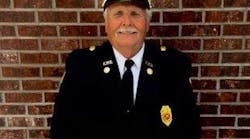We thank Contributing Editors William Goldfeder and Mark McLees for helping compile these reports. We again invite readers to share their experiences. You may send them to Chief Goldfeder at [email protected].
A Not-So-Routine Automatic Alarm
As our fire department responded to a general-alarm house fire, dispatch notified the lieutenant of the first-due engine that we were responding to an automatic fire alarm, that a key holder would be responding and there was possible smoke on the first floor. Upon arrival, the first-due engine was positioned in front of the house with a hydrant located five houses away from that location. During the size-up, light smoke was observed coming from the eaves of the house. Knowing there were no chiefs in town, the lieutenant assumed command of the scene and designated himself the incident commander.
A report of “smoke showing” was transmitted and the lieutenant continued his size-up of the location. Information received from the acting engine officer indicated that a rear bedroom was charged with heavy smoke and fire. A report of a “working fire” was transmitted, which automatically dispatched a rapid intervention team from a neighboring department.
A 13¼4-inch handline, backed up by a 21¼2-inch handline, was pulled and a fire-to-hydrant operation was executed. The primary search team went to work and found a “well-involved” basement fire. An aggressive interior attack to the basement was attempted with the first attack team.
With the arrival of our truck company, the building was laddered and a full truck operation went into effect. Upon the arrival of our rescue company, a command post was set up. A short time later, the homeowner informed the incident commander that he was a gun dealer and he had live rounds, numerous handguns and rifles stored in the basement. There also was a report of possible raw gunpowder in the basement.
The lieutenant immediately advised all personnel to cease operations in the basement, conducted an accountability of all manpower at the scene and instructed all handlines to attack the fire through the basement windows. The county fire marshal’s office and the county police bomb squad were notified to respond.
As the fire continued to spread to the first floor, an additional rapid intervention team was dispatched from another neighboring department, and the original rapid intervention team was put to work. Additional mutual aid was called from three more departments to respond to the scene or to cover stations. Soon after the first-due engine company was ordered out of the basement and during the rest of the operation, numerous pistol shells were exploding.
In addition to the outside attack by handlines, two 21¼2-inch Bresnan distributors were put into operation. After the main body of fire was knocked down, an attack line was sent down in the basement and on the first floor and the remaining spots of fire were extinguished. The fire was then reported under control. All manpower was accounted for, and no injuries were reported.
Upon the completion of the incident, it was learned that in addition to the basement the house contained a sub-basement, where a quick inventory of the firearms showed 50-plus rifles, 10-plus handguns and numerous live rounds left outside a fire-rated safe.
The message here is, remember not all automatic fire alarms are malfunctions. I commend our lieutenant not only for his professional conduct as incident commander, but on his life-saving decision to withdraw the manpower and proceed with an aggressive exterior attack.
“Lost In A Forest Of Chrome Pipes”
I responded to a structure fire in a two-story building that was occupied by a lodge of some sort. Myself and one other firefighter were assigned to search the second floor. This area consisted of one large room used for dances. In this room were approximately 100 cocktail tables and 300-plus barstools, all of which had chrome-plated legs. This room also had four-foot-high dividers placed randomly to provide smaller seating areas.
As I was searching in heavy smoke conditions I lost contact with one of the walls (not all the partitions were connected with the outside walls). It was rather unnerving to be lost in a forest of chrome pipes. I stopped what I was doing and told myself that my training has taught me what to do in this type of situation. After I collected my thoughts, I looked at the floor and there was my roadmap, the floor was covered with black and white tiles. I picked a line and crawled to a wall and safety.
How To Lose A Firefighter
We were called on mutual aid to a working house fire that started in the garage of a raised-ranch home with a person working on a car with a droplight and gasoline. You guessed it ... ka-boom! I have pictures of the initial two departments with multiple handlines pushing into the house. The next thing you see is a firefighter walking out of the garage area after falling through the floor in one of the bedrooms. No one had any idea why he was where he was.
This was one of the classic examples of how to lose a home ... and a firefighter.





